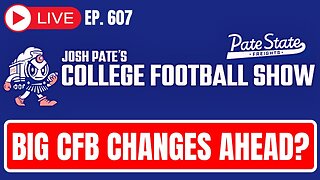Premium Only Content

👉2023 VW Golf R -- Ultimate In-Depth Look -- Volkswagen
New for 2023
The Golf R is available in two trims for the 2023 model year—the fully-equipped Golf R from the prior model year, along with a limited-production Golf R 20th Anniversary Edition. After receiving a full redesign for MY22, the Mk8 Golf R adds minor cosmetic changes. More details on the 20th Anniversary Edition will come at a later date.
Full details and specs: https://www.mikescarinfo.com/2023/05/2023-vw-golf-r.html
MSRP for the 2023 Golf R starts at $44,740 for the six-speed manual transmission and $45,540 for the seven-speed DSG automatic. Destination is $1,095.
Powertrain
The Golf R is an altogether different breed of Golf. In addition to being the performance benchmark of the Volkswagen catalog, the Mk8 Golf R is the most powerful production Golf ever. The 2.0-liter TSI® turbocharged and direct-injection unit that powers the Mk8 Golf R is a member of the latest, fourth-generation EA888 engine family and is built in a state-of-the-art factory in Gyor, Hungary.
In Golf R specification, the EA888 evo4 engine displaces 1984cc, producing 315 horsepower (achieved using premium fuel) at 5,600 rpm, and 295 lb-ft of torque at 2,000 rpm on DSG-equipped models (manual-equipped models produce 315 hp at 5,900 rpm and 280 lb-ft of torque at 1,900 rpm). The evo4 engine can be paired with either a six-speed manual transmission or an optional seven-speed DSG automatic transmission with Tiptronic. For the first time since the introduction of the DSG, the gearbox will stay in manual mode if the driver has selected it, when in “Special” or “Drift” driving mode. The DSG transmission incorporates a Start-Stop System designed to save fuel, as well as a launch control feature.
EPA-estimated fuel economy for Golf R models equipped with the six-speed manual is 20 mpg city, 28 mpg highway, and 23 mpg combined. When equipped with the optional seven-speed DSG transmission, Golf R delivers EPA-estimated fuel economy of 23 mpg city, 30 mpg highway, and 26 mpg combined.
4Motion® all-wheel-drive system with rear-axle torque vectoring. The advanced torque vectoring system in the Mk8 Golf R serves as the foundation for its updated handling abilities, delivering a new level of performance for its category.
While the previous generation’s 4Motion system could send up to 50 percent of the engine’s total power to the rear axle via a multi-plate clutch, the new system distributes the drive power not just between the front and rear axles, but also between the two rear wheels. Using a rear differential with two multi-plate clutches, it can distribute up to 100 percent of the rear torque to an individual rear wheel. This makes it possible to significantly increase the agility of the Golf R, particularly when cornering. The system is designed to apportion power between the wheels based on speed, throttle application, yaw, and other factors. In a typical corner, more power can be directed to the wheel on the outside of the curve in a matter of milliseconds, reducing the cornering radius.
The benefits of the latest-generation 4Motion system are still retained, helping to eliminate traction losses. The system activates before wheelspin occurs by using an advanced control function based on specific driving conditions. When operating under a relatively low load or when coasting, the front wheels are driven and the rear wheels are decoupled, helping to save fuel. However, the rear wheels can be engaged in fractions of a second whenever necessary via the center differential, which is activated by an electro-hydraulic oil pump.
A control unit continually calculates the ideal drive torque for the rear wheels and controls how much the multi-plate clutch should be closed by activating the oil pump. The oil pressure increases the contact pressure at the clutch plates in proportion to the torque desired at the rear axle. So, the amount of pressure applied to the clutch plates can be used to continuously vary the amount of torque going between the front and rear wheels, up to a maximum of 50 percent at the rear axle.
In addition to the center differential that acts longitudinally and the torque vectoring function of the rear axle, electronic differential locks that are a function of the Electronic Stability Control (ESC) system act laterally. The system can briefly brake a wheel that is slipping, enabling uninterrupted and stable transfer of drive power to the wheel on the opposite side.
Join this channel to get access to perks:
https://www.youtube.com/channel/UCMofElKP5RZI5tj2HX9cmfQ/join
Thoroughly Experience this Vehicle at Your Convenience.
Credits:
Music: Black Mirror by Soundridemusic
Link to Video: https://youtu.be/KWVTcTZeQeo
-
 3:28
3:28
MikesCarInfo
1 year ago $0.01 earnedReplace Battery Nissan Key Fob -- Nissan's New Intelligent Smart Proximity Key FOB
1391 -
 1:14:02
1:14:02
Donald Trump Jr.
5 hours agoThe USAID Truman Show, Interview with Mike Benz | Triggered Ep.214
80.5K109 -
 34:24
34:24
Kimberly Guilfoyle
6 hours agoFaith, Fairness, and a Better Future: Live w/ Joy Pullmann & Elizabeth Mitchell | Ep.194
72.9K20 -
 LIVE
LIVE
Josh Pate's College Football Show
4 hours agoBig CFB Changes Coming | DeBoer Fixing Alabama | Signing Day Reaction | OhioSt vs Michigan Shift
225 watching -
 LIVE
LIVE
The StoneZONE with Roger Stone
49 minutes agoEXCLUSIVE: James O'Keefe Talks to Roger Stone About Dropped Charges Against Him | The StoneZONE
1,135 watching -
 1:17:13
1:17:13
Redacted News
4 hours agoTRUMP IS BURNING IT ALL DOWN AND DEMOCRATS WANT HIM IMPEACHED AGAIN, USAID ROT GOES DEEP | Redacted
128K276 -
 52:23
52:23
Candace Show Podcast
4 hours agoUPDATE! Taylor Swift Goes Full Dragon Against Blake Lively | Candace Ep 144
95.9K157 -
 54:41
54:41
LFA TV
1 day agoCorruption Like You Never Imagined | TRUMPET DAILY 2.6.25 7pm
5.56K4 -
 39:10
39:10
theDaily302
11 hours agoThe Daily 302- JJ Carrell
2.87K -
 DVR
DVR
Common Threads
2 hours agoLIVE DEBATE: Is Elon Musk Going Too Far with Spending Cuts?
13.4K8